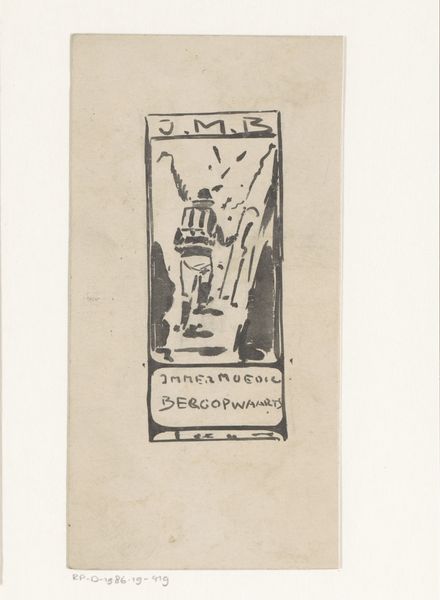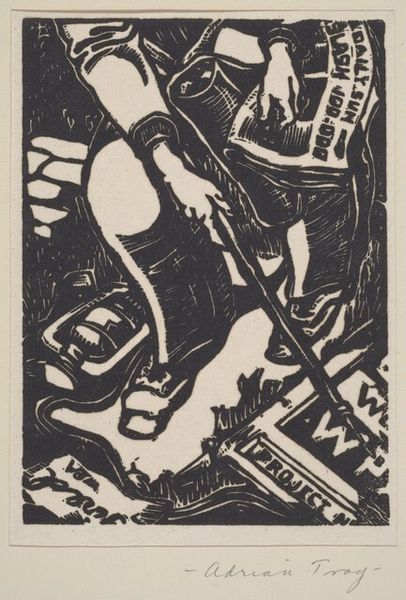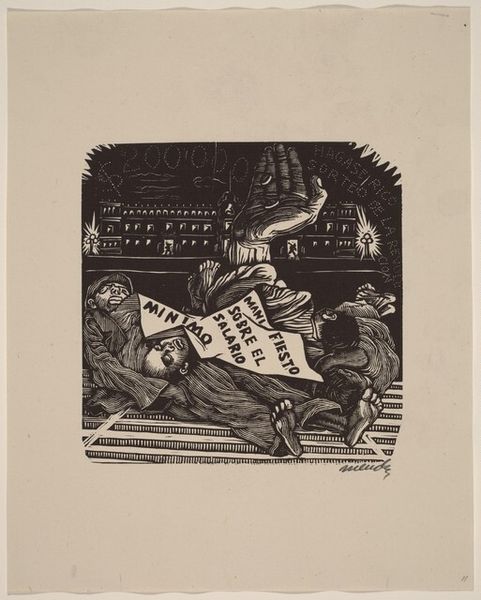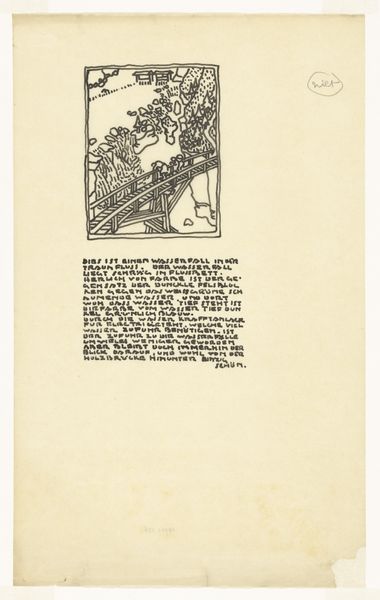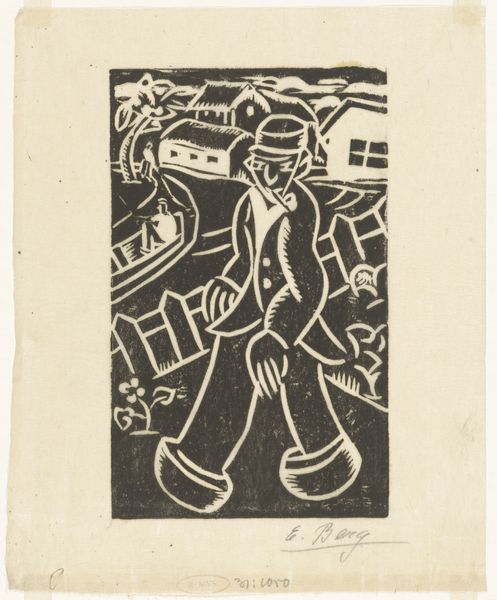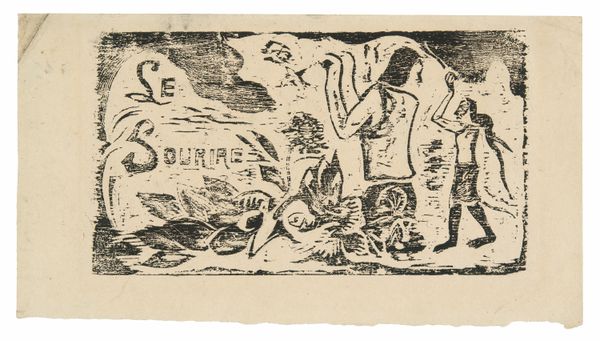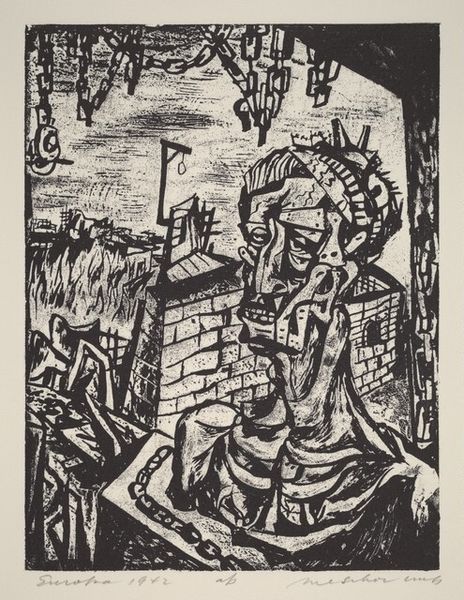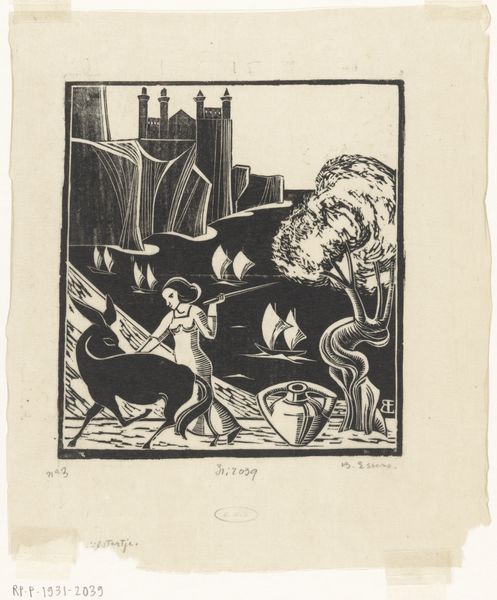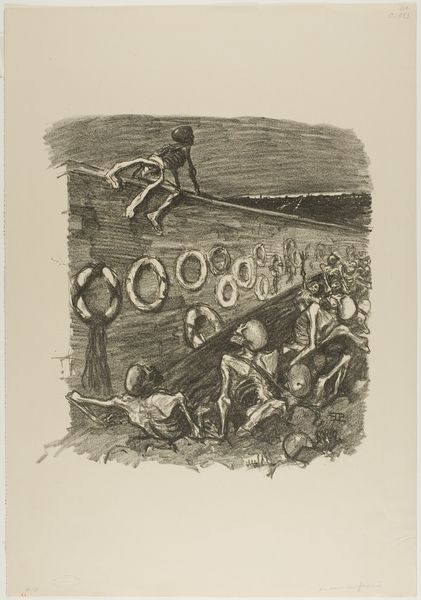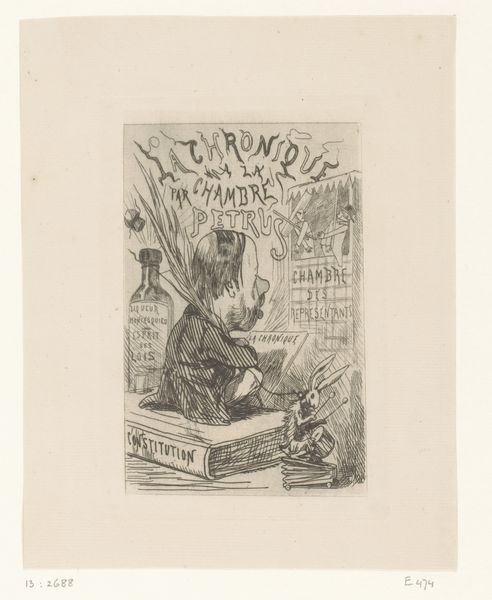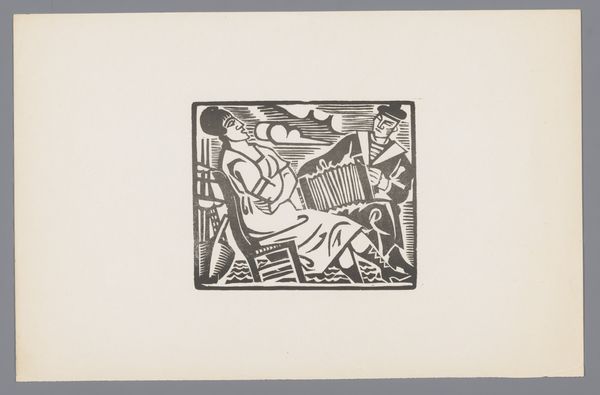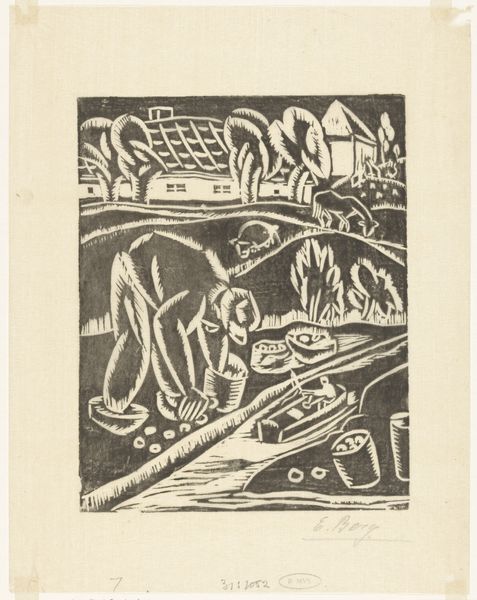
drawing, graphic-art, ink, pencil
#
drawing
#
graphic-art
#
form
#
ink
#
geometric
#
pencil
#
line
#
cityscape
#
modernism
Dimensions: height 105 mm, width 95 mm
Copyright: Rijks Museum: Open Domain
Curator: This is "Loopkranen met Ry- en Hyschmotoren," dating sometime between 1906 and 1945. It's by Reijer Stolk and done in ink and pencil. Editor: The composition is really striking, with the cranes looming in the foreground. It almost feels like I'm looking up at these massive industrial machines. What can you tell me about this work? Curator: Well, consider the context. This drawing isn't just about the aesthetic appeal of machinery; it’s deeply embedded in the materials and processes of industrial labor. The drawing itself, with its reliance on ink and pencil, cheap and readily available materials, mirrors the accessibility and utilitarian function of the cranes it depicts. Do you see how Stolk renders the geometric forms? Editor: Yes, the lines are very precise. The form is geometric, yet still sketchy, as it looks like some areas are unfinished. It reminds me of early modernist aesthetics and maybe even futurism, though it seems more focused on documentation. Curator: Precisely. This bridges between high art and craft, documenting industry from the viewpoint of labor itself. We see evidence of human effort not only in the depicted scene but also in the deliberate, albeit raw, artistic execution. Think about the societal view of industry at the time; How did it compare to how factory labor was being processed through art and documentation at the time? Editor: It’s interesting how it shows the process through drawing these very utilitarian objects that powered that change. Seeing this sketch has opened my eyes to the importance of understanding materials and production. It’s not just about what's depicted but how it's made. Curator: Exactly. It’s about unpacking the layers of materiality, the social implications, and the means of production tied to the work and what’s being produced. Editor: Definitely something to reflect on. Thank you for highlighting this work in this fascinating way.
Comments
No comments
Be the first to comment and join the conversation on the ultimate creative platform.
